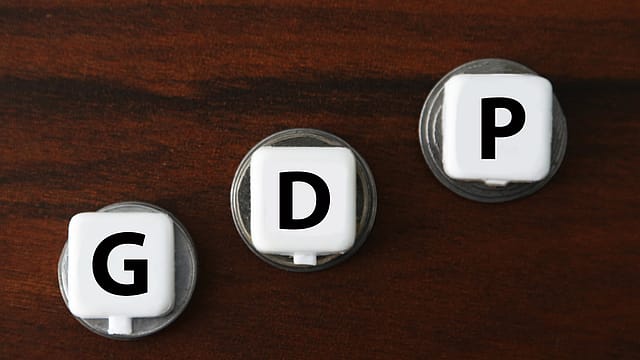ADB upgrades India's GDP growth forecast to 7% for FY25
ADVERTISEMENT

The Asian Development Bank has raised India's gross domestic product growth forecast for the financial year 2024-25 to 7% from 6.7% earlier.
Growth will be driven by public and private sector investment demand and by gradual improvement in consumer demand as the rural economy improves, says the Philippines-based development bank.
India's GDP growth is forecast to slow to 7% in FY25 but improve to 7.2% in FY26.
Exports are likely to be relatively muted in FY25 as growth in major advanced economies slows down but will improve in FY26, says ADB. The current account deficit will widen to 1.7% of GDP in FY25 and FY26 on rising imports to meet domestic demand, it predicts.
“India’s growth strategy is predicated on substantial export growth. It can be achieved through integration into global value chains. A target of $2 trillion in exports of goods and services has been set by the government to be achieved by 2030,” says ADB.
In FY24, combined exports of goods and services reached an estimated $770 billion. “Thus, considerable growth will be needed to reach the government’s targets. Increasing goods exports requires India to integrate into global value chains (GVCs), which must entail India specializing in stages of production where it has a comparative advantage, as opposed to necessarily looking to be present in the entire value chain,” it says.
January 2026
Netflix, which has been in India for a decade, has successfully struck a balance between high-class premium content and pricing that attracts a range of customers. Find out how the U.S. streaming giant evolved in India, plus an exclusive interview with CEO Ted Sarandos. Also read about the Best Investments for 2026, and how rising growth and easing inflation will come in handy for finance minister Nirmala Sitharaman as she prepares Budget 2026.
"Inflation will continue its downward trend in tandem with global trends. To boost exports in the medium term, India needs greater integration into global value chains,” the bank says.
Investment prospects are brightened by public capital expenditure and improving private investments, ADB says. “The central government allocation for capital expenditure is higher by 17% in FY25 over the previous year. Capital expenditure by state governments will also remain strong, helped by central government transfers to state governments for infrastructure investment,” it says.
“On the private sector side, investment in housing will remain strong, driven by stable interest rates and higher income growth for high-income households. A new government initiative to support urban housing for middle-income households is expected to spur housing growth. Private corporate investment is also likely to grow,” the regional development bank says.
The government’s focus on fiscal consolidation will continue, creating space for private borrowing, says ADB. As domestic financial institutions are the primary buyers of government securities, reduced government borrowing will create room for greater private sector credit.
Monetary policy will become less restrictive this year as inflation nears the policy target of 4%, facilitating credit expansion, notes ADB. Less restrictive monetary policy and continued fiscal consolidation will pave the way for the rapid rate of increase in bank credit.
